#Nazi Occupied Paris
Explore tagged Tumblr posts
Text
"Broussard says this is more than just a story about about one man taking pictures during World War II.
"As I flipped through the pages I realized, my God, it's all scenes of [Nazi] occupied Paris. And I knew I'd found a treasure," she says. "And then I read the little note in the front. 'If you find this album,' it said, 'take care of it and have the courage to look at it.' I thought, someone sent a message in a bottle and I just found it." @NPR
0 notes
Text

With this chilling autobiographical novel historian Cécile Desprairies probes why her mother and other family members zealously collaborated with the Nazi occupiers of France, remaining for decades afterward devotees of that evil lost cause. Review copies, translated by Natasha Lehrer, available now.
#New Vessel Press#The Propagandist#Cécile Desprairies#French history#French literature#occupied France#Nazi occupied Paris#translation#Natasha Lehrer
0 notes
Note
Sherlolly in WWII Paris, please & thank you!
He doesn't know where she is, or if she has managed to survive; all he knows is her handwriting, and the odd little tick she has to her 'V's and her 'Q's.
It is a wet afternoon in a small little alley just off the Passage de Panoramas, and a glimpse of fresh chalk makes him stop. Rain gathers in his tousled hair, droplets running down his back from the upturned collar of his coat; he reaches out with trembling fingers to trace the shape of the letter 'V', hastily scribbled and beginning to smudge from the water---but there is no mistaking that odd little tick.
Give me a pairing, an AU setting, and I'll write you a three-sentence fic!
#mizjoely#answered#sherlock#sherlock x molly#sherlolly#otp: let's start with the riding crop#ch: sherlock holmes#ch: molly hooper#eleanorwrites#3 sentence fic#inspiration taken from the fact that writing a V on walls/in public spaces was a act of resistance in occupied paris#the shithead nazis tried to co-opt it but it didn't work#because at that point the letter 'V' was synonymous with resistance
13 notes
·
View notes
Text

Tales of Suspense (1959) #94
#I also overlooked Sharon tackling Steve to protect him#it’s strange that this is paired with Steve calling Sharon ‘little girl’#and trying to convince her to escape and let him finish her mission#and telling her that her mission is ‘too big for one girl’#it’s very reminiscent to me of the way he talked to Peggy in the story dedicated to their history in issue 77#telling her ‘You’ve got to leave the partisans! This isn’t woman’s work!’#then explaining ‘I know I haven’t the right to speak to you this way’ but ‘you’ve come to mean so much to me’#and then immediately after when he learns Peggy has orders to go to Paris alone#‘No! You can’t! You mustn’t! Paris is still occupied by the Nazis! You wouldn’t have a chance there! I won’t let you do it!’#though he doesn’t actually then stop her from doing her mission#it is strange to me that Sharon cares so much about her work but isn’t bothered by the way Steve speaks to her#we didn’t really see enough of Peggy for that to feel obtrusive#marvel#steve rogers#sharon carter#my posts#comic panels
3 notes
·
View notes
Text
thirteen x missy save me...
#lis talks#doctor who#goddd i love dhawan!master he was slaying he was carrying the show. but isnt it tragic to you the way he just reverts after missys arc.#also he and 13 are straight passing but whatever.#i want my wife back (missy having actual character and developing as a person) (and also being a woman or something)#i think abt it a lot... dont you find it so sad how she ended up reverting into who she was before and in fact getting worse#dont you find it sad how the show didnt acknowledge it in any way!#and the doctor immediately jumped to leaving him in weird dimensions and also nazi occupied paris. it makes me wanna throw up a bit
2 notes
·
View notes
Text
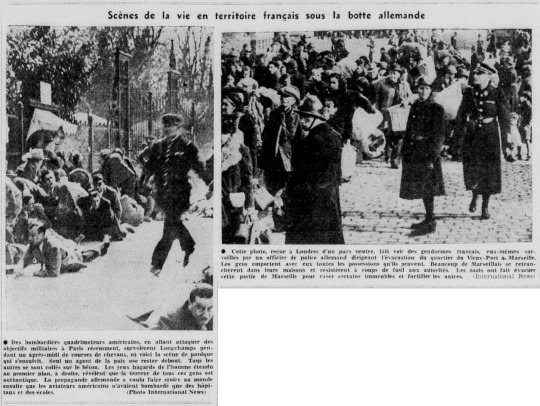
"Scènes de la vie en territoire français sous la botte allemande," Le Soleil. May 7, 1943. Page 1. ---- Des bombardiers quadrimoteurs américains, en allant attaquer des objectifs militaires à Paris récemment, survolèrent Longchamps pendant un après-midi de courses de chevaux, et voici la scène de panique qui s'ensuivit. Seul un agent de la paix ose rester debout. Tous les autres se sont collés sur le béton. Les yeux hagards de l'homme étendu au premier plan, à droite, révèlent que la terreur de tous ces gens est authentique. La propagande allemande a voulu faire croire au monde ensuite que les aviateurs américains n'avaient bombardé que des hópitaux et des écoles. (Photo International News)
Cette photo, reçue à Londres d'un pays neutre, fait voir des gendarmes français, eus-mêmes surveillés par un officier de police allemand dirigeant l'évacuation du quartier du Vieux-Port à Marseille. Les gens emportent avec eux toutes les possessions qu'ils peuvent, Beaucoup de Marseillais se retrancherent dans leurs maisons et résistèrent à coups de fusil aux autorités. Les nazis ont fait évacuer cette partie de Marseille pour raser certains immeubles et fortifier les autres. (International News)
#paris#gendarmerie nationale#occupied france#vichy france#regime de vichy#marseille#german occupation#nazi empire#air raids#bombing raids#world war ii
0 notes
Text
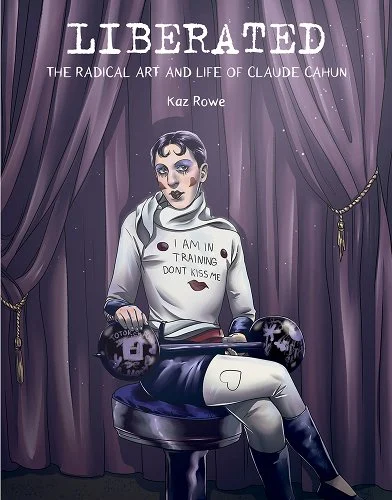
Liberated: The Radical Art and Life of Claude Cahun
Kaz Rowe
At the turn of the 20th century in Nantes, France, Lucy Schwob met Suzanne Malherbe, and lightning struck. The two became partners both artistically and romantically and transformed themselves into the creative personas Claude Cahun and Marcel Moore. Together, the couple embarked on a radical journey of Surrealist collaboration that would take them from conservative provincial France to the vibrancy of 1920s Paris to the oppression of Nazi-occupied Jersey during World War II, where they used art to undermine the Nazi regime. Cahun and Moore challenged gender roles and championed freedom at a time when strict societal norms meant that the truth of their relationship had to remain secret. Featuring 10 photographs by Cahun and Moore, this graphic biography by cartoonist Kaz Rowe brings Cahun's inspiring story to life.
(Affiliate link above)
#queer history#queer#lgbt#lgbt history#transgender history#transgender#making queer history#queer books#graphic novel
617 notes
·
View notes
Text
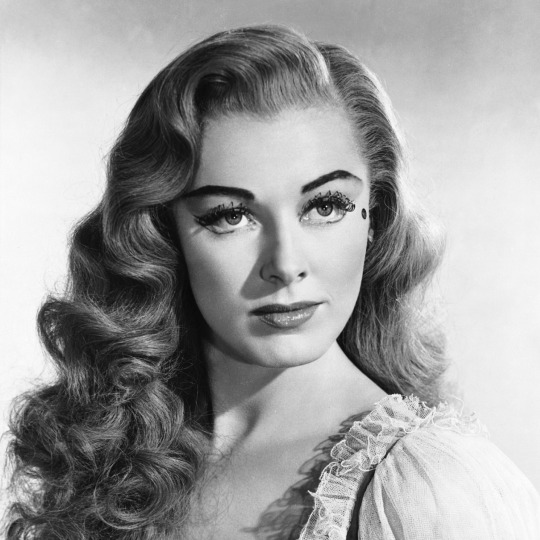
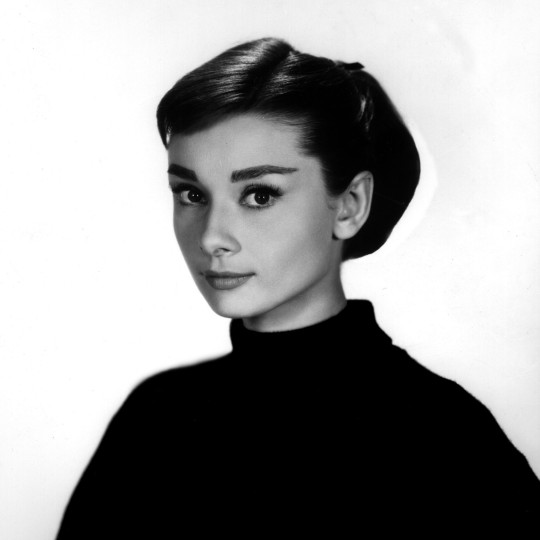
Propaganda
Eleanor Parker (Scaramouche, The Sound of Music)— Eulogized as a ravishing beauty whose looks were merely ornamental to her craft, feast your eyes on Eleanor Parker. Listen! I know you're thinking of the Baroness in Sound of Music and saying NO I won't protect the woman who tried to steal him from Maria but forget about that (like you personally wouldn't shoot your shot with Plummer)! The trailer for Scaramouche describes her character Lenore as "The glamourous queen of the nightlife of Paris. A flame-haired wildcat" and this is a woman who was able to pull off that role, and you get the vibe she was like that irl too. There's a story about her changing hair colors that never fails to make me laugh. Take note of her stunning eyes! Her amazing legs! And to see her in motion is to make note of the aura about her, she has an amazing presence. Fall in love with Eleanor Parker today, and make your vote count!
Audrey Hepburn (My Fair Lady, Sabrina, Roman Holiday)—Growing up, Audrey Hepburn desperately wanting to be a professional ballerina, but she was starved during WWII and couldn't pursue her dream due to the effects of malnourishment. After she was cast in Roman Holiday, she skyrocketed to fame, and appeared in classics like My Fair Lady and Breakfast at Tiffany's. She's gorgeous, and mixes humor and class in all of her performances. After the majority of her acting career came to close, she became a UNICEF ambassador.
This is round 3 of the tournament. (yes I know it says round 2 in the poll. sometimes I post these when I’m sleepy.) All other polls in this bracket can be found here. Please reblog with further support of your beloved hot sexy vintage woman.
[additional propaganda submitted under the cut.]
Eleanor Parker:
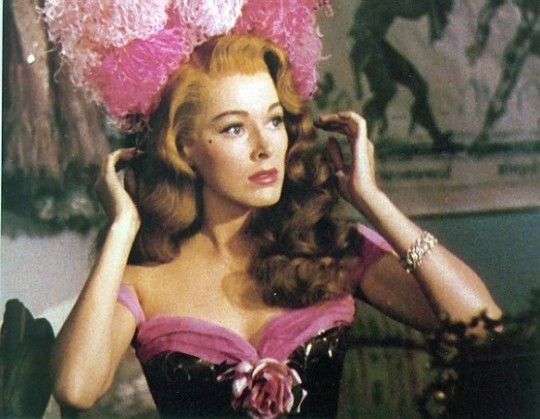
“When I’m spotted somewhere, it means that my characterizations haven’t covered up Eleanor Parker the person. I prefer it the other way around.” So shy she was actively nervous about winning awards in person, her personal life remains mostly behind the scenes. But on screen? she was a force majeure. It's a shame the role most people remember her in is the Baroness in The Sound of Music, but then again, it did make Christopher Plummer reminisce upon her passing “I was sure she was enchanted and would live forever.”
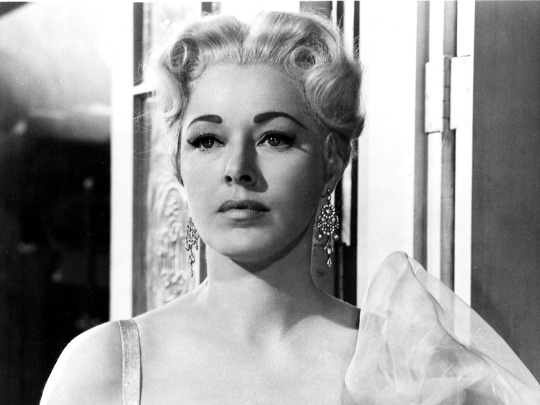
Listen we all know Christopher Plummer and Julie Andrews had insane chemistry but the Baroness deserves some love too! She has such a glamorous presence but not in a hard way
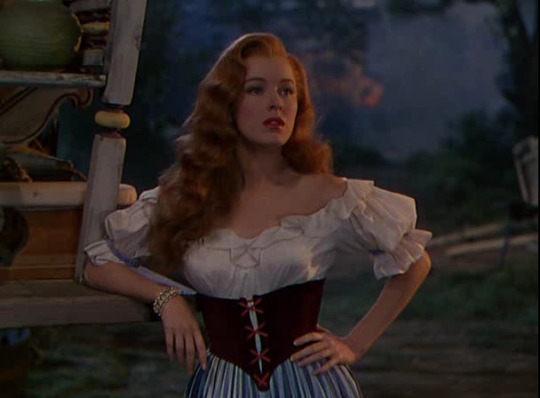
She will be known as the fabulous baroness in TSOM, but she was so much more than that. Just as comfortable in westerns or melodrama, the scheming other woman, and the beauty that wins the heart of every man in town.
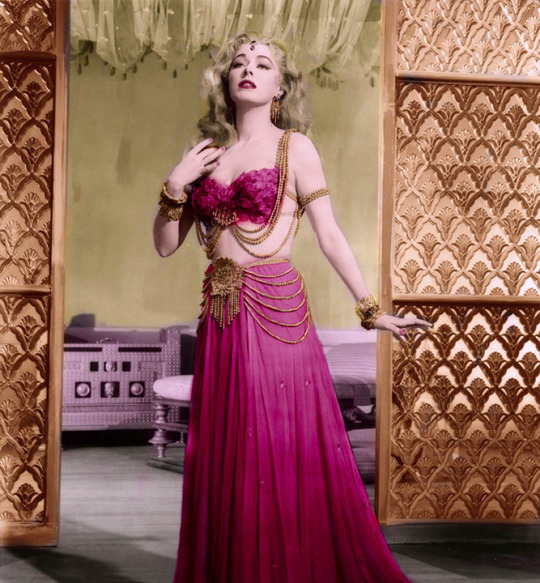
Audrey Hepburn propaganda:

"She may be a wispy, thin little thing, but when you see that girl, you know you're really in the presence of something. In that league there's only ever been Garbo, and the other Hepburn, and maybe Bergman. It's a rare quality, but boy, do you know when you've found it." - Billy Wilder

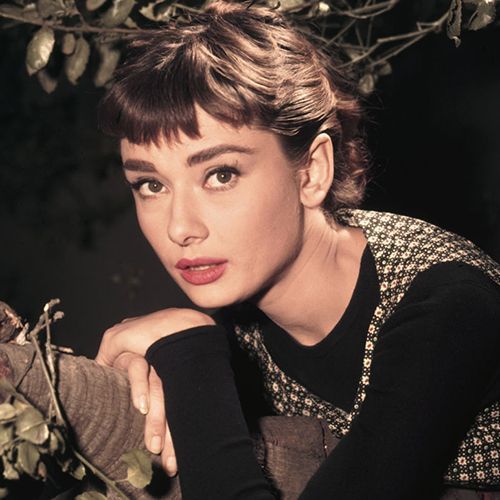
Raised money for the resistance in nazi occupied Hungary. Became a humanitarian after retiring. Two very sexy things to do!
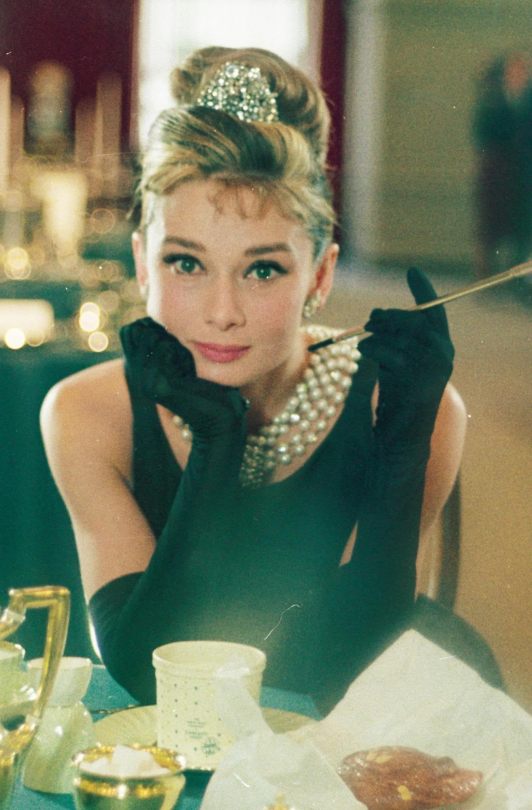
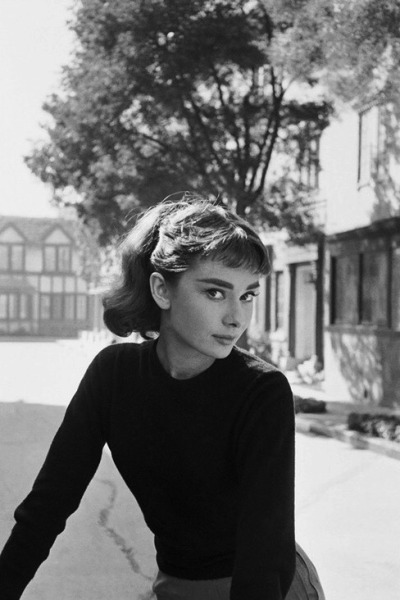
where to begin......... i wont her so bad. i literally dont know what to say.
My dude. The big doe eyes, the cheekbones, the voice. The flawless way she carried herself. She was never in a movie where she wasn't drop dead gorgeous. Oh, also the fact she raised funds against the Nazis doing BALLET and she won the Presidential Medal of Freedom for her humanitarian work.
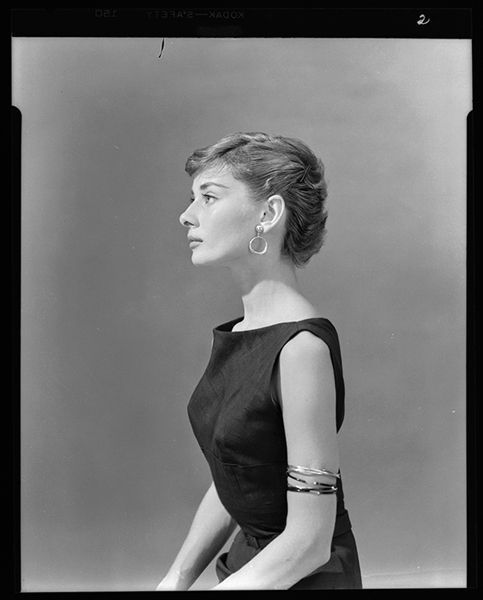
"It’s as if she dropped out of the sky into the ’50s, half wood-nymph, half princess, and then disappeared in her golden coach, wearing her glass slippers and leaving no footprints." - Molly Haskell
"All I want for Christmas is to make another movie with Audrey Hepburn." - Cary Grant
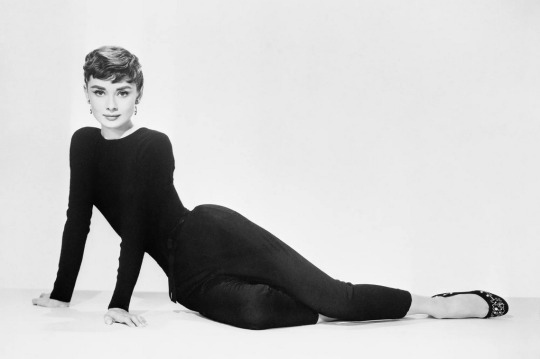
64.media.tumblr.com
I know people nowadays are probably sick of seeing her with all the beauty and fashion merch around that depicts her and/or Marilyn Monroe but she is considered a classic Hollywood beauty for a reason. Ironically in her day she was more of the alternative beauty when compared to many of her contemporaries. She always came off with such elegance and grace, and she was so charming. Apparently she was a delight to work with considering how many of her co-stars had wonderful things to say about her. Outside of her beauty and acting ability she was immensely kind. She helped raise funds for the Dutch resistance during WWII by putting on underground dance performances as well as volunteering at hospitals and other small things to help the resistance. During her Hollywood career and later years she worked with UNICEF a lot. Just an all around beautiful person both inside and out.
youtube
No one could wear clothes in this era like she could. She was every major designer's favorite star and as such her films are time capsules of high fashion at the time. But beyond that, she had such an elegance in her screen presence that belied a broad range of ability. From a naive princess, to a confused widow, to a loving and mischievous daughter, she could play it all.
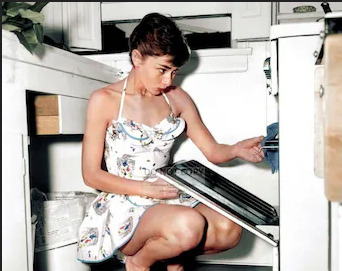
Look at that woman's neck. Don't you want to bite it?

162 notes
·
View notes
Photo
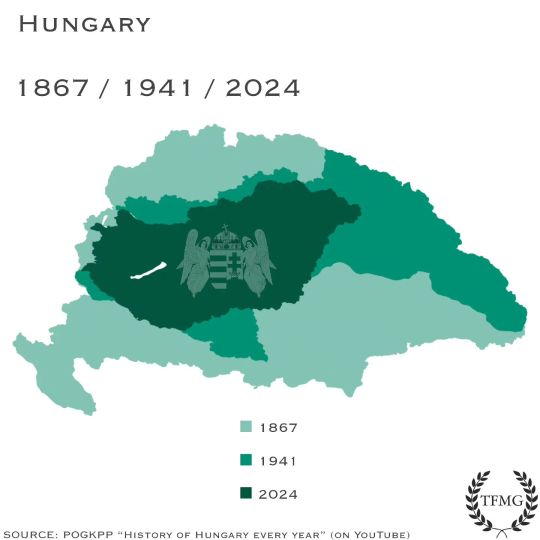
Hungary in 1867, 1941, and 2024.
From 1867 to today, Hungary's territory has undergone significant changes due to wars, treaties, and political shifts. In 1867, the Austro-Hungarian Compromise created the Dual Monarchy of Austria-Hungary, granting Hungary considerable autonomy within the empire.
After World War I, the Treaty of Trianon in 1920 drastically reduced Hungary's territory by about 72% and its population by 64%, ceding regions to Romania, Czechoslovakia, the Kingdom of Serbs, Croats, and Slovenes (later Yugoslavia), and Austria. In the interwar period, Hungary regained some territories through agreements with Nazi Germany: the First Vienna Award (1938) returned southern Slovakia and southern Carpathian Ruthenia, and the Second Vienna Award (1940) returned northern Transylvania from Romania.
During World War II, Hungary occupied parts of Yugoslavia in 1941. However, post-war treaties, particularly the Treaty of Paris in 1947, reinstated the Trianon boundaries, nullifying the wartime gains.
Throughout the Cold War era (1949-1989), Hungary was a socialist republic under Soviet influence, with its borders remaining consistent with those established in 1947. Following the fall of communism in 1989, Hungary transitioned to a democratic republic. Since 1991, Hungary has been a stable democratic state and a member of the European Union since 2004, with its current borders unchanged since 1947. Today, Hungary's borders are stable and internationally recognized.
by theflagmapguy_2.0
81 notes
·
View notes
Note
Hi :) Perhaps an odd one, but I was wondering if you had any recommendations of games to play out events that have already happened? The end game has been predetermined, but the events that lead to it are more mutable? I'm running a dnd game with a group that has been very open to trying out different systems and I was thinking it could be very fun to put the player characters back in time into the shoes of other characters during the campaign's inciting event. Thanks!
Theme: Recalling Events
Hello friend, so there are definitely games that allow you to do something similar to what you’re looking for. There are games that go back in time, games that flashback to previous events, and games that take place at moments in our real-world history that have already happened. I don’t know if any of those games exactly work for what you’re looking for, but they might be interesting to look at in order to ask yourself how you want to run something in a timeline that you’ve established for a specific setting.

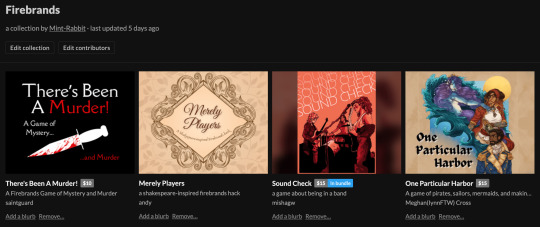



Ten Candles, by Calvary Games.
Ten Candles is a zero-prep tabletop storytelling game designed for one-shot 2-4 hour sessions of tragic horror. It is best played with one GM and 3-5 players, by the light of ten tea light candles which provide atmosphere, act as a countdown timer for the game, and allow you to literally burn your character sheet away as you play.
Ten Candles is described as a "tragic horror" game rather than survival horror for one main reason: in Ten Candles there are no survivors. In the final scene of the game, when only one candle remains, all of the characters will die. In this, Ten Candles is not a game about "winning" or beating the monsters. Instead, it is a game about what happens in the dark, and about those who try to survive within it. It is a game about being pushed to the brink of madness and despair, searching for hope in a hopeless world, and trying to do something meaningful with your final few hours left.
There is only a few facts pre-determined at the beginning of this game, but those facts are important: all of your characters will die. Over the course of the game, you will slowly blow out ten candles as your characters grow closer and closer too their doom.
However, the nature of that doom can be altered. I’ve seen it done for the Locked Tomb, for example, and you can set it in a modern world, a futuristic world, or a fantasy world if you like. If you want to hack this game for your group, I’d recommend playing out a scenario that involves characters that you don’t mind saying goodbye too - perhaps a catastrophe your party heard about, and you can role-play the last moments of some people they failed to save.
Firebrands Games
Mobile Zero Firebrands is a game about mech pilots getting into fights and falling in love, but more importantly, it’s a game that guides the group through mini-game-like scenes that are common tropes in various stories. The beginning scene and the end scene are usually pre-determined, but all of the other scenes happen in whatever order you prefer.
The original system has been hacked a number of times, so you might find a game or genre that works for you - perhaps you’d like to play pirates in One Particular Harbour, or gods and heroes in Divine || Mundane. You could play members of a religious order looking for a new leader in Hierophants, or look into the complicated lives of mages in Hearts of Magic. If you don’t find anything that works for your specific tastes that already exists, you could also hack the system to make it fit for your specific group.
Eat the Reich, by Rowan, Rook & Decard.
Eat the Reich is a tabletop roleplaying game in which you, a vampire commando, are coffin-dropped into occupied Paris and must cut a bloody swathe through nazi forces en route to your ultimate goal: drinking all of Adolf Hitler’s blood.
This over-the-top, ultra-violent game is designed to be played from beginning to end in one to three sessions of carnage, blood magic, meaningful flashbacks and hundreds upon hundreds of extremely dead fascists. It tells one story, it tells it loud, and it tells it brilliantly. Think Wolfenstein crossed with Danger 5 and you’re not far off the mark.
Eat the Reich both happens at a very specific point in time - WWII - and also has a mechanic that allows characters to flash-back to various points in their shared backstories in order to play through a high-action sequence while still getting to know the characters. Your vampires have been working together for a long time, and while Eat the Reich is meant to be rather fast, these flashbacks allow you to speed up that relationship-building by letting you fill the details in backwards.
Eat the Reich started out as a hack of Havoc Brigade, if I remember correctly, so the system is definitely hack-able: perhaps you can think of a big event that happened in your party’s past or even in another part of the world, and then design characters that represent folks who were behind the big event. I think this kind of game would work best for heists or high-stakes assassination - anything that expects your players to put their lives on the line for a big, sweet payoff.
Retrocausality, by Weird Age Games.
Retrocausality is a tabletop RPG about time travel adventures, in the vein of Bill & Ted's Excellent Adventure or Back to the Future.
It uses a rules-light, card-based system that lets you decide how time travel works. Whether you have a specific movie you want to emulate, you have Opinions on the Novikov self-consistency principle, or you prefer not to ask too many questions, Retrocausality can make it happen. Even better, the rules are so light you can use Retrocausality to run a time travel adventure in a different game. That's twice as much game.
Many of the examples shown in Retrocausality indicate that the time travellers you play will be messing with a timeline, and since the rules can be ported into a different game, that tells me that you could use this for any genre you like. This of course, means that you’re not just telling a story about your characters’ pasts - your characters are actually going back in time to a specific part of history.
I suppose you could use this to either bring your characters back to a time period before they were born, or maybe instead you’re interested in taking new heroes back to a point in time when your characters were doing something significant off-camera.
Houses of the Sun By Night, by Emily Zhu.
These are 13 houses of the underworld that the sun passes through at night.
These are 13 minigames you can play in specific situations, during your other games or on their own.
This is how the dead come back to life.
This series of games is explicitly designed to be hackable, with a setting that can be ripped apart if you like. The original setting is a nod to the underworld of Egyptian mythology, but the moments themselves can be zoomed in on a small moment or used to navigate a special event that may have big effects on the larger story. I think you can use some of the games in here to re-visit moments of your characters’ pasts, or reference events that may have happened to NPCs that the characters were not necessarily witness to.
If you want to learn more about this set of games, you can watch Aaron Voight’s review of the game on Youtube!
Other Games To Check Out
Feng Shui 2, by Atlas Games.
Time Travel Recommendation Post
96 notes
·
View notes
Text

Henri Cartier-Bresson Resistance Members Firing on the Nazis During the Paris Uprising c.Aug 20, 1944
Today marks the 80th Anniversary of the uprising against the Nazi occupiers in Paris, which ultimately led to the liberation of the city.
69 notes
·
View notes
Text
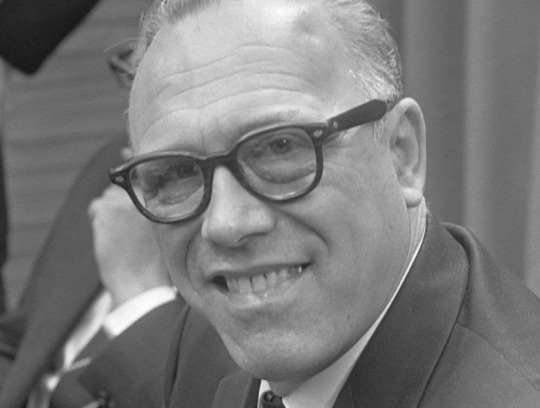
THURSDAY HERO: Johan Weidner
Johan “Jean” Weidner was a Dutch businessman who created an extensive underground rescue network and saved the lives of 800 Jews and 112 downed Allied aviators.
Born in Brussels in 1912 to Dutch parents, Jean grew up in Switzerland in a devout Seventh-Day Adventist home. His father, a minister who taught Greek and Latin at a church seminary, wanted Jean to become a clergyman but instead he decided to go into business. He moved to Paris in 1935 and started an import-export textile firm.
When the Germans occupied Paris in 1940 Jean dropped everything and fled to Lyon in unoccupied France. He had to abandon his company, so he started a new one in Lyon.
In 1941, as the situation for Jews and other enemies of the Nazi war machine grew more dire, Jean took action. He created an underground network secretly run out of his textile factory. To facilitate escape to Switzerland, Jean opened a second branch of his business in Annecy, near the Swiss border. The route was dotted with safe houses and locals sympathetic to the Resistance who sheltered the refugees and helped them cross the border.
Known as Dutch-Paris, the network Jean created became one of the most effective resistance groups during war. Also called “the Swiss Way,” the network’s mission was to rescue people targeted by the Nazis by hiding them until they could help them escape to a neutral country.
Jean was leader of 330 men, women and teenagers working clandestinely in occupied countries of Western Europe as well as in Switzerland.
Dutch-Paris was constantly in need of funds to support their extensive activities, and Jean made a deal with the Dutch ambassador to Switzerland. The Dutch government-in-exile in London would fund the rescue operations if Jean 1) expanded the escape route to reach all the way to Spain and 2) used the route to convey intelligence on microfilm between Dutch resistance groups. Jean agreed to the terms and the expanded network began operating in November 1943.
In January of 1944 they began rescuing downed Allied aviators, an especially dangerous operation because it attracted the attention of German military intelligence officers. In only a month they saved over 112 pilots before tragedy struck. In February 1944, a young Dutch woman working as a courier was arrested by the French police and turned over to the Gestapo. They tortured her physically and psychologically, and threatened her family. She cracked under pressure and gave up names of her colleagues colleagues in the Dutch-Paris network.
Germans started arresting members of Dutch-Paris, including Jean’s sister Gabrielle. Over the next few months, many of the rescuers were sent to concentration camps, where at least forty of them were murdered. Gabrielle survived until liberation by the Russians, but she was so malnourished that she died days later.
Jean was able to escape capture long enough to rebuild networks and continue his rescue operations. In Toulouse he was arrested by the French police, but he escaped before they were able to transfer him to the Germans.
France was liberated in November 1944 and Jean was invited to London by Queen Wilhemina to inform her about the Dutch-Paris route, and the situation for Dutch civilians in areas occupied by the Germans. He was made a Captian in the Dutch Armed Forces but after the war he was let go by the Dutch government for not being a professional policeman. Jean returned to his textile business, and in 1955 emigrated to the United States where he and his wife operated a chain of health food stores for several decades.
He received multiple awards for his wartime heroism including the US Medal of Freedom, the Croix de Guerre and the Legion d’honneur. He was honored as Righteous Among the Nations by Israeli Holocaust Memorial Yad Vashem, and a grove of trees was planted in his name. In 1993, at the opening of the United States Holocaust Museum in Washington DC, he was one of seven people chosen to light candles honoring rescuers.
Jean Weidner died in 1994 in Southern California. Abraham Foxman, then National Director of the ADL said, “John Weidner lived his entire life giving back… Until his death, he lived a life of selflessness and service, working tirelessly to make the world a better place.”
For creating an underground escape route for victims of the Nazis, and saving hundreds of lives, we honor Jean Weidner as this week’s Thursday Hero.
55 notes
·
View notes
Text

"Life is unfair. I got nothing but the best."
Jean Marais
He was the muse and lover of the great artist/writer/filmmaker Jean Cocteau, plus he was an actor of considerable skill and certain charisma, a film and theatre director, writer, and visual artist.
Marais was born Jean-Alfred Villain-Marais in Cherbourg to a shoplifting, sometimes violent, sometimes loving mother. He was always drawn to drama of all sorts. Expelled from school when, to amuse his friends, Marais dressed as a girl and flirted with a male teacher. As a kid, Marais worked various jobs including newspaper boy, photographer, and sketch artist.
In 1937, 24-year-old Marais first met the 48-year-old Cocteau. They became acquainted when Marais auditioned for a role in a revival of Cocteau's play OEDIPE-ROI. Cocteau cast Marais for the role, plus he fell madly in love with the young actor.
Marais and Cocteau became partners in life and art. Marais nudged Cocteau to write a special screenplay for him to play the lead role. L'ETERNEL RETOUR (1943) was that film and it became a commercial success and a critical triumph for both the filmmaker and its star.
Marais continued to act in films and plays while the Nazis occupied France during World War II. Both Cocteau and Marais stayed in Paris during the occupation despite the very real danger of having nearly everyone in the city knowing that they were a gay couple. Cocteau had some powerful connections who protected them, even after Marais punched a Vichy critic for writing a bad review of one of Cocteau's plays. Their names were posted in the French press, which was controlled by those nasty Nazis, but because of Cocteau's friends in high places, they avoided being arrested and sent to a concentration camp.
Marais tried to join the Resistance, but he was rejected for being gay and also because of his reputation for speaking candidly. So instead, he volunteered for France's Second Armored Division after the liberation of Paris and drove trucks carrying fuel and ammunition to the frontlines during the Allied invasion of Germany. Marais was eventually awarded the Croix de Guerre for his bravery during his wartime service.
During the Nazi occupation, there were other gay couples in Paris, but it was unusual for any of them to be openly living together, working together, and behaving like a married couple. They were especially brave, even maybe reckless.
After the war in 1946, L'ETERNEL RETOUR was released in the USA introducing Marais to American film fans. Photographs of his handsome face and hot body became a popular pin-up for teenage girls and for gay fans slyly aware of his real relationship with Cocteau.
Cocteau didn't consider himself a filmmaker, but poet, and LA BELLE ET LA BETE (1946), his film masterpiece, plays like a visual poem in which Marais plays three roles.
Although Marais and Cocteau's romance cooled down by the late 1940s, they remained the closest of friends until Cocteau's final credits rolled for good in 1963. After Cocteau died, Marais stated: "I bitterly regret not having spent all of my life serving Cocteau instead of worrying about my own career." Marais enjoyed that career; it lasted more than six decades. His blond, classical good looks and skillful acting can be experienced in more than 100 films and television shows.
In the 1950s, Marais fell in love with American dancer and choreographer George Reich (1926 – 2013). Reich resembled Marais; both were blonde, athletic, and unworldly handsome. Reich was the first classically trained dancer to organize an American-style ballet company in France, The Ballet HO. He danced at the Lido de Paris, the Moulin Rouge, The Ballet De Paris, and in the MGM musical film THE GLASS SLIPPER (1955) with Leslie Caron, plus he provided the choreography for Marlene Dietrich, Joséphine Baker, and Edith Piaf's nightclub acts. Reich and Marais were a couple for more than a decade.
Marais sought to reconcile romantically with Cocteau at the end of the great artist's life, but rebuffed and frustrated, he returned to his old opium habit. Marais had been legally adopted by Cocteau so that he would be his inheritor.
Like Cocteau, Marais had no problem finding the company of handsome younger men. For one of them, Serge Ayala (1943 – 2012), he helped find acting work and legally adopted him as a son, taking the name Serge Villain-Marais. This adopted son became a singer and an actor. Marais enjoyed life with his protégé until he took his final curtain call in 1998, gone from heart failure, just like his former, fabulous, famous lover. The adopted son took his own life in 2012 at 69 years old after troubling inheritance litigation with Marais's estate left him lonely and depressed.
Marais's life story served as the inspiration for François Truffaut's film THE LAST METRO (1980).
Photo: Marais et Cocteau à la terrasse d'un café de Venise, lors de la huitième Mostra de Venise, 1947
30 notes
·
View notes
Text
IWTV S2E2 and History
One thing I really appreciate about this show is how it interacts with its historical setting. I worried that when Louis and Claudia left New Orleans last season, the show would start to shirk the historical details, but the latest episode has given me enough historical tidbits to chew on (pun intended).
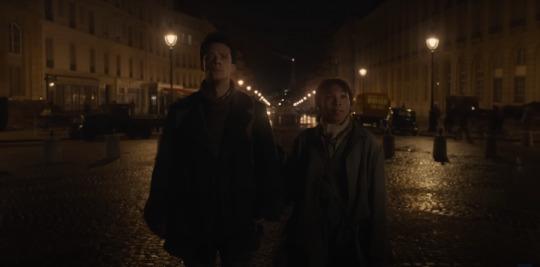
Hidden behind the humor of lines like "Paris is shit" and the thrill of meeting other vampires, there's a sense of foreboding lingering beside the recent traumas.
As with the first episode of season 2, Louis and Claudia are surrounded by reminders of war, even if they do not have the context (or empathy) for the survivors they encounter. Claudia complains that she has to pick twice as many pockets to get by, but the two are still able to afford an apartment. Meanwhile, food staples and clothing are still rationed, but people and pigeons are easy to come by.
"Paris was Nazi scar tissue at the time..."
Louis explains, but the scars historically ran deeper than a tourist (and Louis is The stereotypical tourist in this episode) could understand. Blackouts, food shortages, rations, soldiers, and refugees linger at the corners of the episode.
Even Madeline is introduced to us by a man warning Claudia that she was a collaborator or Nazi sympathizer (he does a subtle salute and points to the shop window), which will certainly influence how the next episodes take her through her narrative beats.
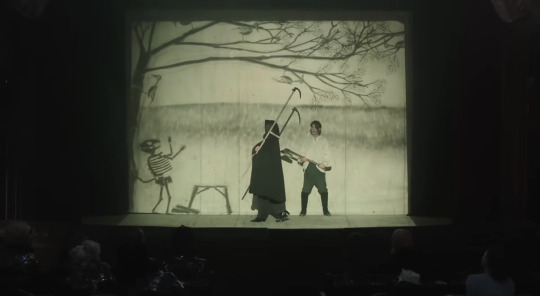
The plays performed by the Théâtre des Vampires cross 1920s to 1940s expressionism with absurdity and horror. Even after all this time, Louis is unenthused about the theatrical performances.
"The plays were weird. They always ended in death or some kind of cruel, barely motivated violence."
Armand's reply is dulled by the onstage spectacle:
"Life is cruel. Life is violent. [...] It was all a seduction to lure the cattle into a willing belief of disbelief."
It's a line that is all the more concerning if you know where the story is going...

Annika, the doomed woman onstage, is from Belgium, yet another country recovering from occupation and war. When she desperately tries to convince the audience to flee (not just for them to help her, but to save themselves), she speaks Dutch, so neither the French nor English-speaking audience members understand her.
Still in character, Santiago pretends to offer her a choice. She could live if she gives up someone to die in her place, if she, as the phrase goes, "turns someone in." First, he offers to take her husband, and she refuses. Then he offers to take her son, and again she refuses. Finally, he points to a man in the audience. She nods vigorously, but it's a cruel joke.
Santiago has already made up his mind about her. He addresses the man, warning him against trusting his neighbors:
"They'll give you up in a wink."
As if someone who spent the last five years in occupied France would need reminding.
The warning is for us, the viewers.
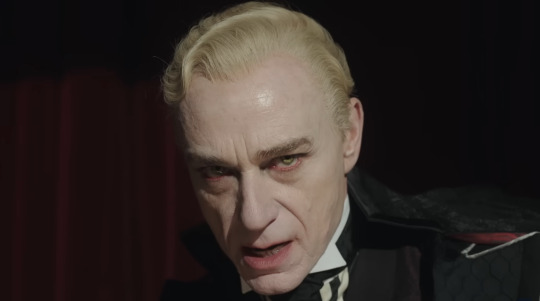
Later, the troupe takes Louis and Claudia to a mansion, ostensibly to eat people who, apparently, hoarded resources from the black market. Another show for Claudia and Louis, tourists who still think of themselves as the "good" vampires. Because why would a troupe of vampires concern themselves with that? They don't need anything from the black market. They don't eat anything from the black market. Where was this sense of justice in recent years?
As with Annika, it's yet another excuse to enact cruel and public violence against people they consider less than them.
So when Santiago's introductory prologue includes lines like:
"Being vampires, and by nature superior to you mortals, we can [...] disrupt your tiny ship called human decency."
"Our jobs, which is at the heart of it, to laugh alongside your misery while you cry and scream for more."
"Everything you're about to see is real. Remember that when you leave here tonight. You are all complicit [...] I love you for it."
You know things are not going to get better for Louis and Claudia.
123 notes
·
View notes
Text

Rose Valland !
She was a French Resistance fighter who rescued and recovered more than 60,000 works of art and cultural property stolen by the Nazis from public institutions and Jewish families during the German occupation!!! For that, she was nicknamed "Capitaine Beaux-Arts"
Rose was born in 1898 and died in 1980. Although she never spoke publicly about her private life and sexual orientation, she never married, and the only relationship she ever had was with a woman.

She was able to study thanks to her mother, who applied for grants for her daughter. In 1914, she entered the École normale d'institutrices in Grenoble, graduating in 1918. Gifted for drawing and encouraged by her teachers, she left to study at the École nationale des beaux-arts in Lyon.
She gained a good reputation there, because she was talented and serious, and won a lot of prizes! In 1922, she entered the École nationale supérieure des beaux-arts in Paris. She then passed the competitive examination for teaching drawing, coming 6th out of more than 300 candidates.
During the 1920s, she studied art history at the École Pratique des Hautes Études, the École du Louvre and the Institut d'Art et d'Archéologie. In 1931, she obtained her diploma from the École du Louvre on the evolution of the Italian art movement up to Giotto. At the Institute of Art and Archaeology at the University of Paris, she obtained three postgraduate certificates in modern art history, medieval archaeology and Greek archaeology. She was so intelligent and cultured, with so many diplomas, it's impressive! She published some studies and articles too, and she even learned to speak some languages like German without even studying it.

From October 1940, at the request of Jacques Jaujard, Director of the Musées Nationaux, she remained at the Musée du Jeu de Paume, officially as a curatorial attaché, unofficially instructed by Jacques Jaujard to report to him on the actions of the Germans, who had just requisitioned the museum to store works of art extorted from private collectors.
During the Occupation, the Germans began systematically looting works from museums and private collections across France, mainly those belonging to Jews who had been deported or had fled. They used the Jeu de Paume museum as a central depot before sorting and directing the works to various destinations in Germany, Austria and Eastern Europe. During the Nazi looting, Rose Valland discreetly recorded, as accurately as possible, the movements of the works passing through the Musée du Jeu de Paume, the names of the looted victims, the number of works, their destinations, the names of the agents in charge of the transfers, the names of the transporters, the marks and writing on the crates, the numbers and dates of the convoys, not forgetting the name of the artist, the work and its dimensions.
For over four years, she kept track of all the works' movements, origins and destinations. She scrupulously drew up dozens of index cards, deciphered German carbon paper discarded in the museum's garbage cans, and discreetly listened in on the conversations of Nazi officials. She provided the Resistance with essential, detailed information on the trains transporting the works, so that these convoys could be spared by the Resistance. In autumn 1944, she gave the Allies the names of German and Austrian depots (Altaussee, Buxheim, Neuschwanstein, Füssen, Nikolsburg, etc.) to avoid bombing, secure them and facilitate the recovery of stored works.
After the liberation of Paris by Allied troops, and until May 1, 1945, she worked with SHAEF (Supreme Headquarters Allied Expeditionary Force), providing the Americans with vital information on storage sites for works transferred to Germany and Austria.
From May 1945, she was seconded from the Ministry of National Education to the Ministry of War, then from 1946 to 1952, seconded as a 3rd class administrator to the Ministry of Foreign Affairs, occupying the Secretariat of State and then the General Commissariat for German and Austrian Affairs. Nicknamed "Captain Beaux-arts", she was appointed Captain in the 1st French Army, while also serving as Head of the Service de remise en place des œuvres d'art (SROA) within the Public Education Division of the French Group of the Board of Control.
She was sent to the various Allied occupation zones, British, American and Soviet, from where she repatriated a large number of works. She cooperated with American agents to conduct investigations and interrogate the Nazi officers and merchants responsible for the looting.
She played a decisive role in the February 1946 Nuremberg hearings on the plundering of art by Nazi leaders.
Between 1945 and 1954, she took part in the repatriation of over 60,000 items of French cultural property taken from public institutions and persecuted Jewish families.
Her courageous and heroic actions during the war and post-war years earned her numerous French and foreign decorations. In fact, Rose Valland was one of the most highly decorated women in French history.
She was :
-> made an Officer of the Legion of Honor
-> made a Commander of the Order of Arts and Letters
-> awarded the French Resistance Medal
-> awarded the Medal of Freedom, the highest civilian decoration in the USA
-> made an Officer of the Order of Merit of the Federal Republic of Germany
-> awarded the Latvian medal of the Order of the Three Stars in recognition of her involvement in the Latvian Art Exhibition (painting, sculpture and folk art), held at the Jeu de Paume from January 27 to February 28, 1939.
Unfortunately, as is often the case with women in history, the role she played in the Resistance, protecting French works of art and the property of deported Jewish people, was quickly forgotten, and her name is hardly ever mentioned today when this part of history is evoked. Insane, when you know everything she's done and how many decorations she got...

At an undetermined time, perhaps in the post-war years, Rose Valland met the British woman Joyce Heer, secretary-interpreter at the U.S. Embassy, who became her lover until her death. The two women shared an apartment on rue de Navarre in Paris. Rose Valland reserved a place for her beside her in the family vault.
Rose Valland died in 1980 at the age of 81 in a nursing home in Ris-Orangis, outside Paris. She is buried with her lover in the family vault in her native village of Saint-Étienne-de-Saint-Geoirs, where the secondary school and a square bear her name.
She truly was a hero, and I wish we talked about her more !
#rose valland#history#ww2#ww2 history#nazi occupation#second world war#women's history#female history#herstory#lesbian#lesbian pride#pride#pride month#lesbian history#female homosexual#female homosexuality
93 notes
·
View notes